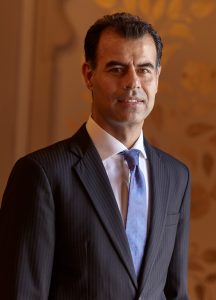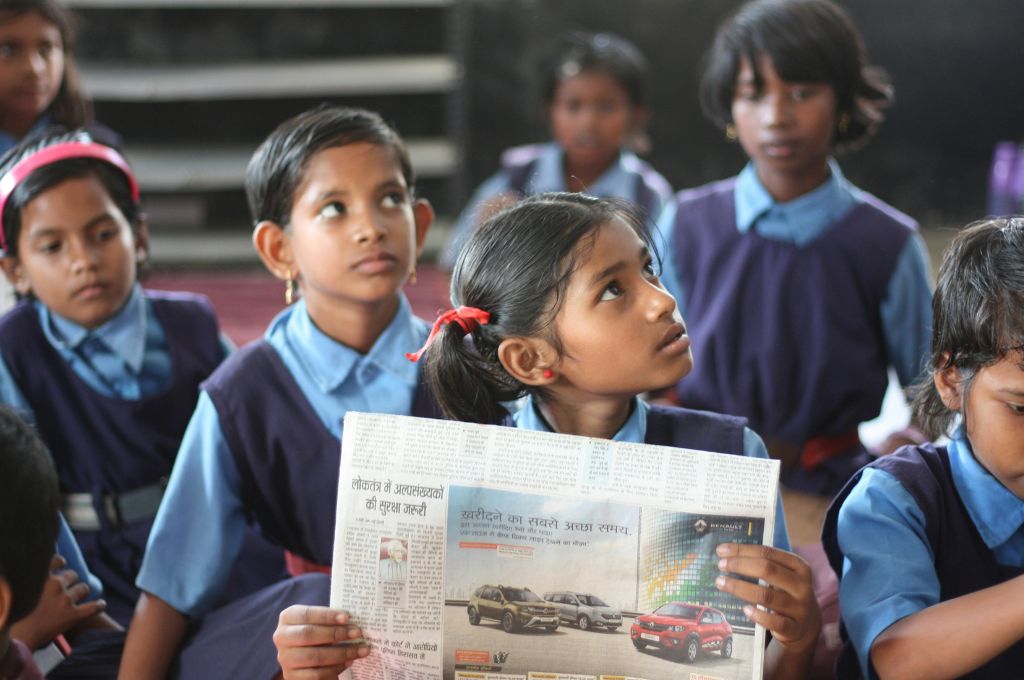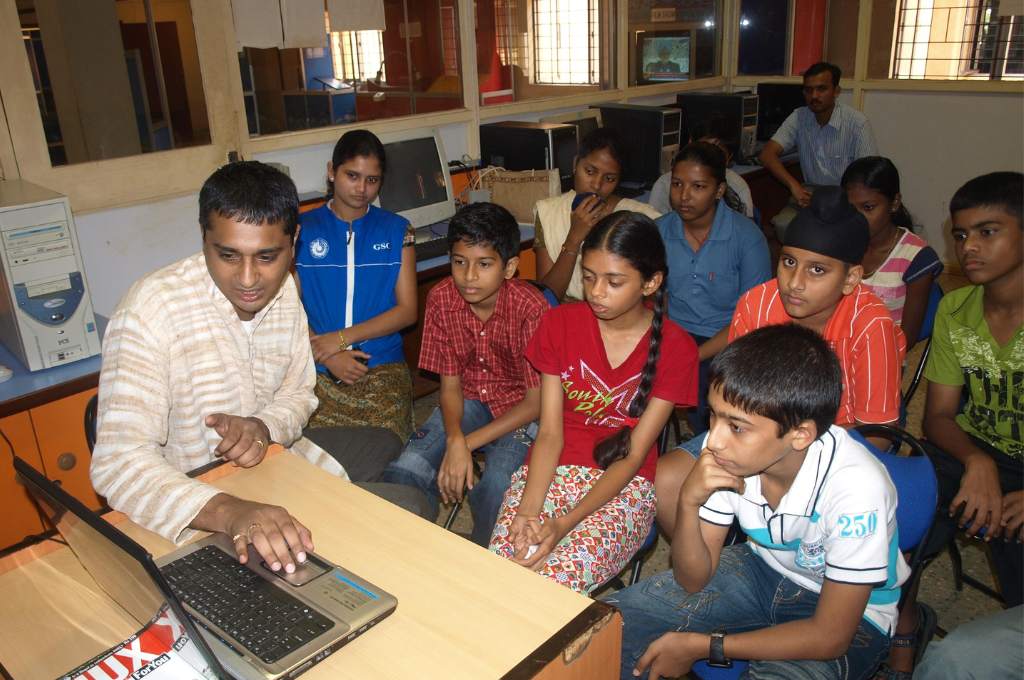The landscape of lending for any sector is made up of formal and informal finance, mostly available through structured, market-driven rates via banks and bank-like entities.
In India, banks are yet to reach the remaining unbanked 19 percent of the population, and non-banking finance companies (NBFCs) are rising in their role as filling the last mile financial inclusion gap. However, from a borrowing perspective, a bulk of borrowing relies on informal borrowing as it is not possible to measure the creditworthiness of most banked customers. Therefore, the unstructured, word-of-mouth micro-loan variety is a common source of borrowing—where the collection mechanism is a function of the level of trust between the two parties.
The education space is no different.
The lending landscape for education
In the education space, the key to growth is to finance infrastructure—be it hard infrastructure like schools, classrooms, playgrounds, etc.; or soft infrastructure like training teachers, improving curriculum, and so on. The soft part is as important, if not more, because though it’s not recoverable against any physical collateral, it shows up in the learning outcomes and therefore ultimately in the growth of the school through stronger word-of-mouth in the community.
The finance to build this infrastructure could be provided by an informal moneylender, an NBFC that lends to SMEs, or a bank—each of these entities can play a significant role in enabling capacity growth of educational institutions.
[quote]The advantage of investing in education—you can predict the cash-flows reasonably well.[/quote]The big advantage of investing in education is that you can predict the cash-flows of the business reasonably well if the school is doing a good job. A strong institution will have a good reputation (determined by word-of-mouth), and will continue to acquire new students (which is the primary basis for cash flows). The biggest unpredictability of cash-flows, however, is regulation. This could be in the form of a change in regulations where schools can no longer borrow at more than a particular percentage, or a cap on the fees that they can charge.
If you, therefore, work with a segment of borrowers which is least likely to be negatively affected by regulation, then you can protect yourself against the biggest risk in this sector.
The affordable private school (APS) market is probably least likely to be affected by this risk factor because it has significant social support—no regulators want to create policy that will adversely impact low-income families—and is therefore a fairly secure segment when it comes to this risk.
The market opportunity for lenders in affordable private schools, and suburban schools and colleges
A significant portion of colleges and schools in India will not be able to procure bank loans for infrastructure expansion.
Banks, for the most part, provide loans to educational institutions at the middle to higher end and to larger chains of successful private schools. That being said, it’s not unusual for even these larger chains to access the higher cost NBFC funds, particularly now with many banks suffering from bad lending consequences and being averse to any kind of out-of-the-norm-lending related perceived risk.

To lenders, schools are more attractive than colleges. | Photo courtesy: Pexels
Banks also require promoter guarantees, and entrepreneurs that serve lower income households are unable to offer these guarantees. But this is where the market opportunity lies, and it is currently being tapped by two segments—the affordable private schools, and the-not-so-affordable suburban private schools and colleges.
Within this market, the sub-segment of private schools is more attractive to lenders as compared to private colleges, assuming that both are average providers of education.
In the case of colleges, outcomes are visible in three to four years and the outcome metrics—number of jobs that these students are placed into—are easier to measure and harder to achieve. The metric for school performance, on the other hand, is not as visible in the market. Because even average schools have average colleges to feed into and most children are going to get into some college—somehow, somewhere.
[quote]Even average schools have average colleges to feed into.[/quote]Second, the amount of time a student spends in school is much longer than students do in colleges; therefore theoretically, they offer a higher customer lifetime value. So, the metrics for investing in private schools make more theoretical sense.
Within schools, the affordable private schools (APS), which are built on passion, driven by one person’s individual desire to create change in the local market is a significant portion. About 30 percent of school-going kids in India are likely to attend affordable private schools in India, and this is a very attractive segment because the desire, on the behalf of the parents who are paying tuition fees, and the promoters who are running these schools is very strong. Therefore, the chance of a good APS failing is very small hence opportunity to lend exists across the board.
The one billion dollar market opportunity
For institutions where the fee structure is about INR 50,000 a year, the primary source of capital is banks. But from a market coverage perspective, this would represent less than 10% of the total schools and 30% of total colleges.
The APS market is no more than 100,000 schools. The largest providers of loans to such schools lend to no more than 3,000-4,000 schools. The market is still very fragmented and nascent and has a long way to go.
At the very top (and in a sense the low-hanging fruit), there are about 10 million underlying borrowers which are represented by about 20,000-30,000 institutions.
After this, are another 100,000 institutions, where the next growth opportunity is available. If each institution borrows about USD 30-50,000 each, then you have an immediate market opportunity, of greater than USD one billion dollars.
The role of smart capital
On the borrowers’ side, we are beginning to see the emergence of a set of players who understand the value of formal lending, especially ‘smart’ capital. The lender therefore needs to provide something beyond low cost funds especially for the repeat borrower, who takes a larger and larger loan each time.
These borrowers are now interested in distinguishing between the typical NBFC that doesn’t fully understand education, and those that can provide value to the them as borrowing institutions.
They understand that smart capital can help them improve their operational efficiencies, cash-flows and even brand through helping them manage their soft infrastructure like teacher training, student safety and so on.
Many of the teachers that teach students at local private schools are individuals who are waiting for something bigger to happen to them in their lives. Many of them churn through the system either because they’re getting married, or going through life changes; they don’t see it as a career. If this is true, then managing a steady flow of teachers through the school is one of the biggest challenges for the APS. At least the teachers who don’t understand teaching as a career because they don’t really understand the growth potential can be trained and reclaimed.
Another area is the issue of student health and safety. Most schools in suburban or rural areas don’t fully understand how to deal with young children in the appropriate manner. They are also unlikely to be aware of how to behave in emergency situations.
Smart lenders can help these schools develop these skills so that they are able to perform at a much higher capacity, have strong word-of-mouth branding, and therefore have substantial and consistently growing cash-flows.
The space needs a pioneer to create a strong market
Despite the large opportunity, there isn’t enough interest from most NBFCs to build out an education portfolio because they are already dealing with other portfolios that are 10 billion-dollar opportunities. Hence despite education being a billion-dollar market, unless it impacts their revenues by at least 10-20% it’s not a market they are likely to focus on, especially since they will have to traverse a steep learning curve.
It therefore requires players—essentially pioneers who are willing to look at smaller markets to look at education as a viable market and prepare it for larger players to enter.
At the AVPN Annual Conference 2018, Sandeep Aneja spoke about building education systems, and how education can be a powerful catalyst for societal change.




